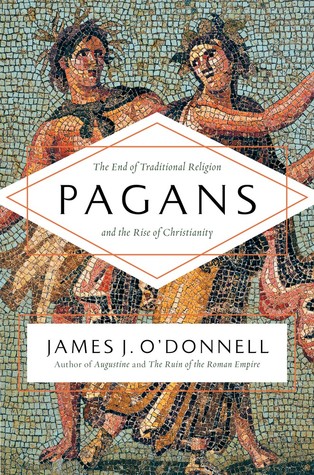|
Pagans: The End of Traditional Religion and the Rise of Christianity
by James J. O’Donnell Published in January 2013 288 Pages Thibault’s Score: 3/5 This book covers the process by which paganism disappeared from Europe and evolved into Christianity from the time of Augustus into the early Middle Ages. I found the book to be very interested, and hearing the story from the perspective of the pagans was different. This book is written clearly and simply, it is not an academic treatise, and has something to offer to both history experts and novices alike. The writing style is descriptive, but remains clear and non-superfluous. There are numerous great descriptions, quoted from various ancient sources, of the ancient pagan rituals. I learned a lot about everything from animal blood sacrifices to astrology. There are also many great anecdotes, illustrating how the gods of one pagan religion would be adopted into other pagan religions. I also like that he makes it very clear that nobody would have called themselves “pagan.” Pagans in Egypt, Gaul, and Italy wouldn’t have viewed themselves as being part of the same religion. The collectivist term “pagan” was used by later Christians to make the distinction between the followers of Abrahamic religions and the polytheistic religions that came before. Paganism is related to “peasant,” because paganism subsided longer in the rural areas, and was used as an insult by the Christian urbanites. I thought that O’Donnell did fall short in a few areas. His insistence on repeatedly attempting to “debunk” the Christian version of the conversion story was a bit annoying. I also wished that he would have given more coverage to non-Christian religions that survived elsewhere in Europe, such as Eastern Europe and Norway, well into the late Middle Ages. Certain, relatively minor, things about O’Donnell’s writing style also irked me. Early in the book, he gives an analogy written in the second person where he instructs the reader to imagine that they are taking a tour through Rome. He does this in several other passages. This book is a solid introduction to the topics surrounding the conversion of pagan Romans to Christianity, and I recommend it to people trying to learn this topic. I’m sure that its not the best book written about the topic, but its the best that I’ve read so far.
0 Comments
Leave a Reply. |
Thibault SerletMost of my articles are book reviews, but I also write about many other topics. Archives
December 2023
Categories |

 RSS Feed
RSS Feed